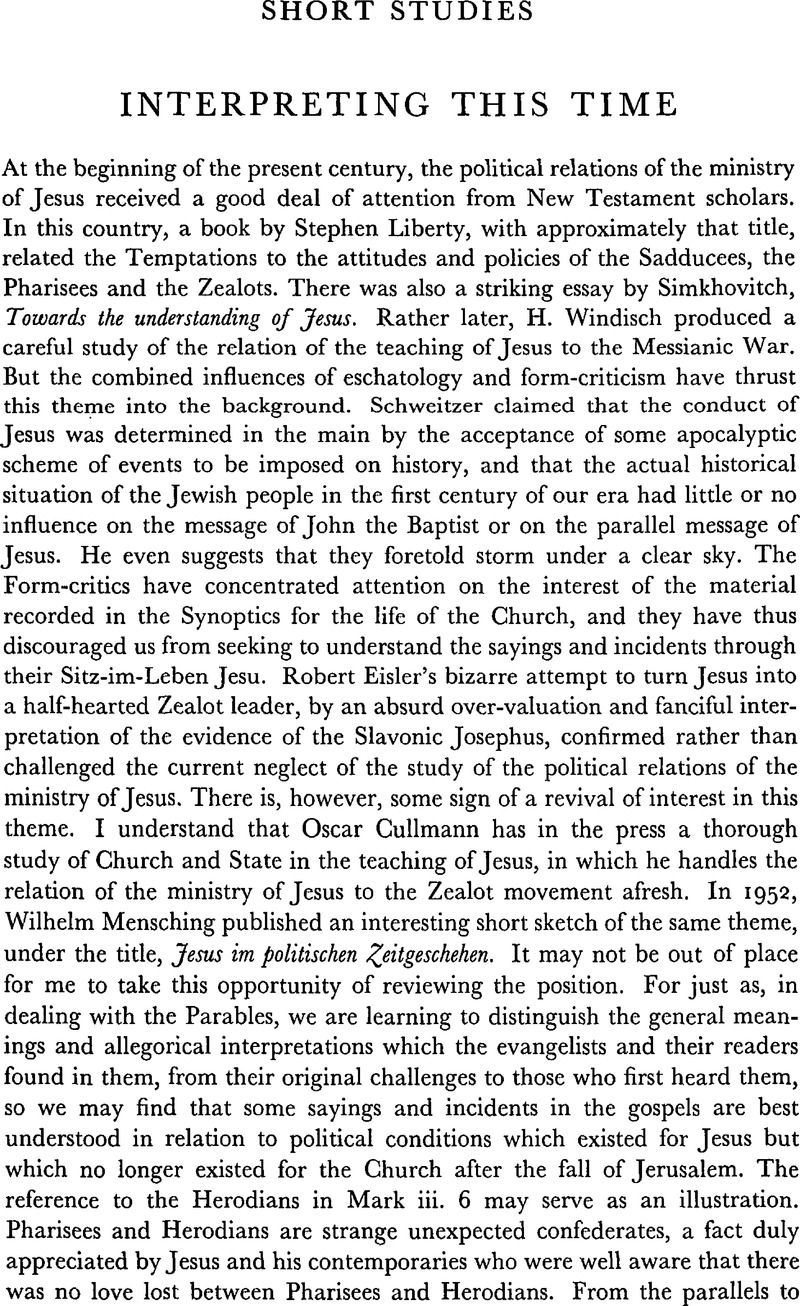No CrossRef data available.
Article contents
Interpreting This Time
Published online by Cambridge University Press: 05 February 2009
Abstract

Information
- Type
- Short Studies
- Information
- Copyright
- Copyright © Cambridge University Press 1956
References
page 263 note 1 Do ‘the three years’ of the parable point to a three-year ministry? Possibly, but it may be a mistake to read so much into a detail.
page 263 note 2 We may compare the description of the siege of Herod's palace, conducted by Menahem, the son of Judas the Galilean, in Josephus, Wars, bk. II, esp. § 436.
page 264 note 1 A parallel to the sentiment of v. 59 might be found in Lincoln's second inaugural: ‘Yet if God wills that it [the Civil War] continue till all the wealth piled by the bondman's 250 years of unrequited toil shall be sunk and until every drop of blood drawn with the lash shall be paid with another drawn by the sword, as was said 3000 years ago, so still it must be said, The judgments of the Lord are true and righteous altogether.’
page 265 note 1 And above these titles [inscribed on stelae warning foreigners not to pass from the court of the Gentiles] was hung a fourth title in the same characters, announcing that Jesus (the) king did not reign (but was) crucified [by the Jews] because he prophesied the destruction of the city and the devastation of the temple (bk. v, pp. 195f.).

